Demo waste plant set to improve the sustainability of SA’s paper industry
Engela Duvenage
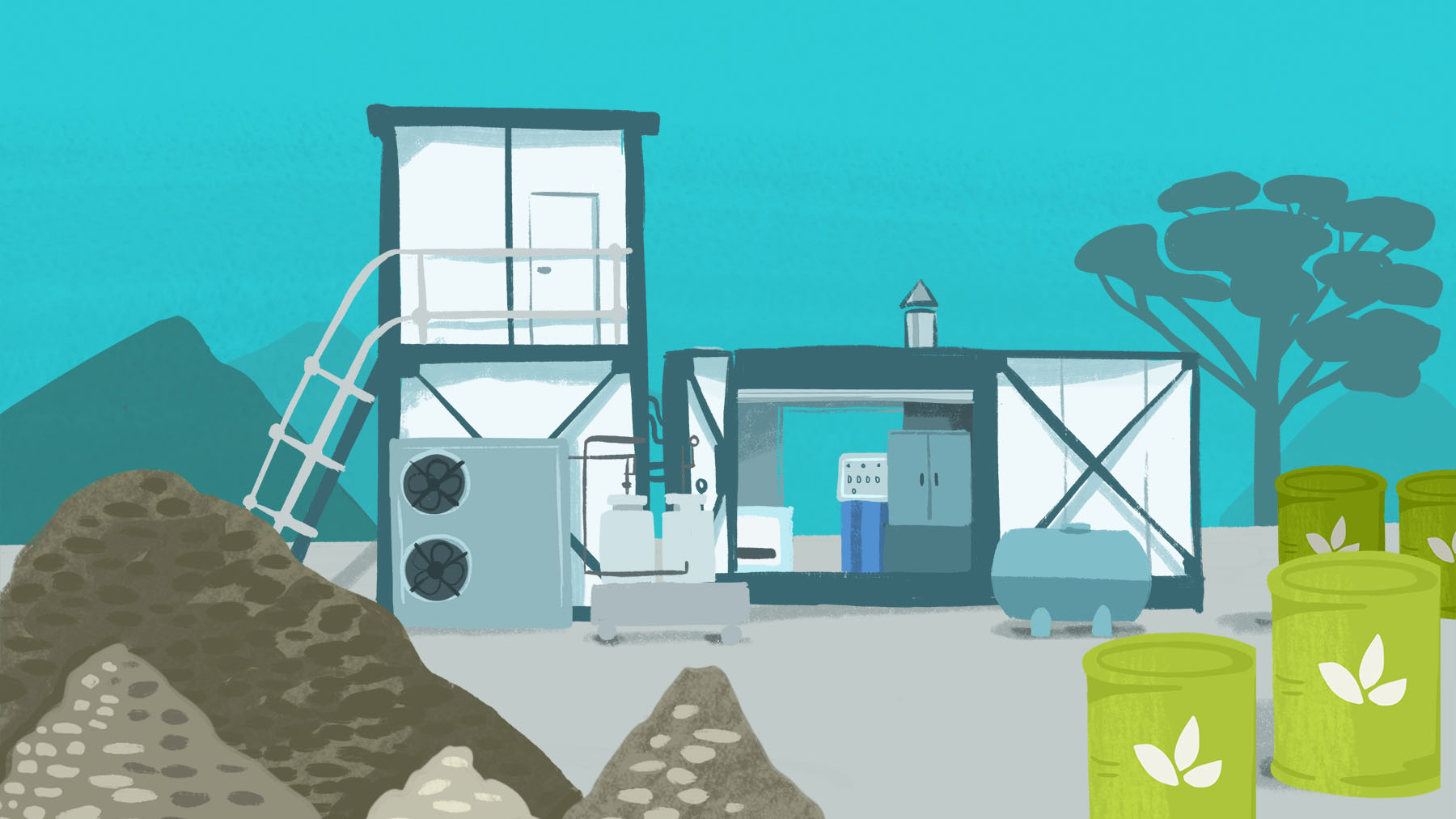
Illustration by Roulé le Roux

Stellenbosch University currently hosts 50 research chairs, 20 of which form part of the South African Research Chairs Initiative (SARChI), funded by the Department of Science and Innovation (DSI), through the National Research Foundation (NRF).
To help South Africa’s paper, packaging and tissue industry secure a more sustainable future — that is the mission of a new demonstration plant at a papermill in Northern KwaZulu-Natal. Driven by the ingenuity of Stellenbosch University’s (SU’s) chemical engineers, it was put into operation in September 2023. The plant showcases the value of a process by which paper waste sludge destined for disposal in a landfill is turned into purified, high-value bioethanol.
The resultant bioethanol can be used to produce industrial chemicals, aviation biofuels, and biomaterials, all with substantial environmental benefits compared to conventional products made from fossil fuels such as crude oil, coal, or natural gas.
This demonstration plant — and the know-how behind it — is one of the first of its kind globally. If it proves its worth, the technology could be scaled up for use in commercial facilities.
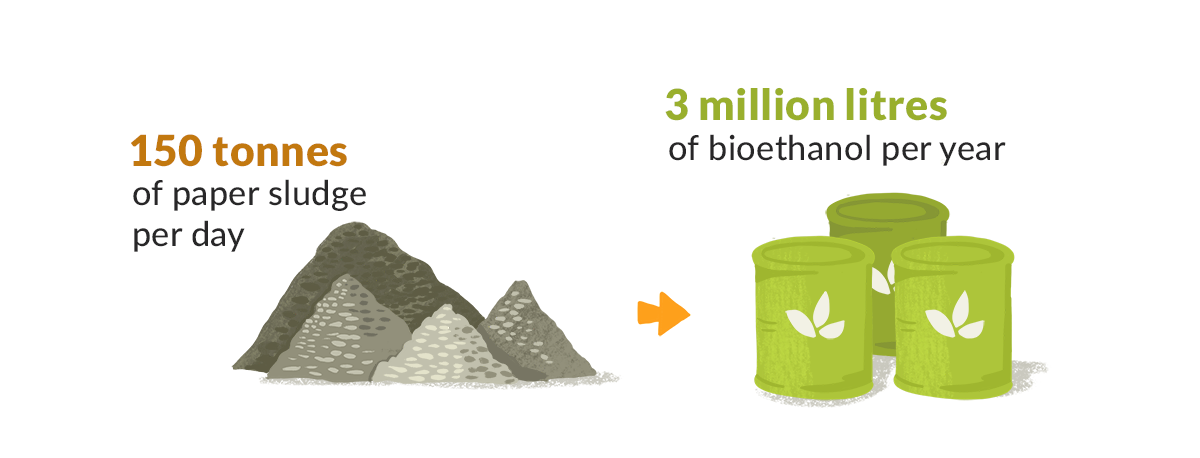
Transforming paper sludge
A typical paper, pulp or tissue mill produces up to 150 tonnes of wet paper sludge daily. The research team believes this “waste” could be transformed into as many as three million litres of bioethanol per year, and serve as an additional revenue stream to boot.
“The end product will be of high value because we are not only producing a source of fuel other than fossil fuels, but also helping to get rid of a transport and a landfill problem,” explains Prof Johann Görgens of SU’s Department of Chemical Engineering. Görgens contributed to the development of the new technology as a member of the University’s Senior Chair of Energy Research (CoER): Biofuels and Other Alternative Clean Fuels.
Paper sludge is produced when wood is turned into pulp or when recycled fibres from printed materials and packaging are repurposed. It is costly for mills to transport the heavy, watery waste to landfill sites where it ultimately decomposes and releases the heat-trapping greenhouse gas methane into the atmosphere. After carbon dioxide, methane is the second largest contributor to climate change.
New legislation is pushing the South African paper, packaging and tissue industry towards finding more environmentally friendly solutions to their paper sludge problem. Görgens hopes that the SU demonstration plant will play a part in this new sustainable future, and prove to be much more cost-effective than plants that transport water-heavy residue to landfill sites.
“Owing to the high volume of water in paper waste sludge, it is preferable to perform the conversion of paper sludge into ethanol as close as possible to source to thereby avoid transport and disposal costs,” Gӧrgens adds.
“In processing the residue, we use many of the same principles applied in producing biofuels using yeasts and enzymes. Once you have the right yeast and enzyme, used optimally in the fermentation process, the subsequent distillation to purify the ethanol is relatively easy. The trick lies in figuring out the specific ‘process recipe’ for each type of residue and how to make it cost-effective,” explains Görgens, who has collaborated with Prof Eugéne van Rensburg on technology development for over a decade.
Görgens and Van Rensburg lead a research group with more than 40 members, currently the largest in SU’s Department of Chemical Engineering. Both were still young, rooky researchers 15 years ago when the Biofuels Chair was conceptualised. Over the years, it has provided a valuable foundation for research on the processing of various plant biomass sources. Although the Chair formally concluded in 2022, Görgens and Van Rensburg still pursue biomass-processing projects, with a particular focus on diversifying the byproducts from sugarcane mills and other industries that produce organic waste.
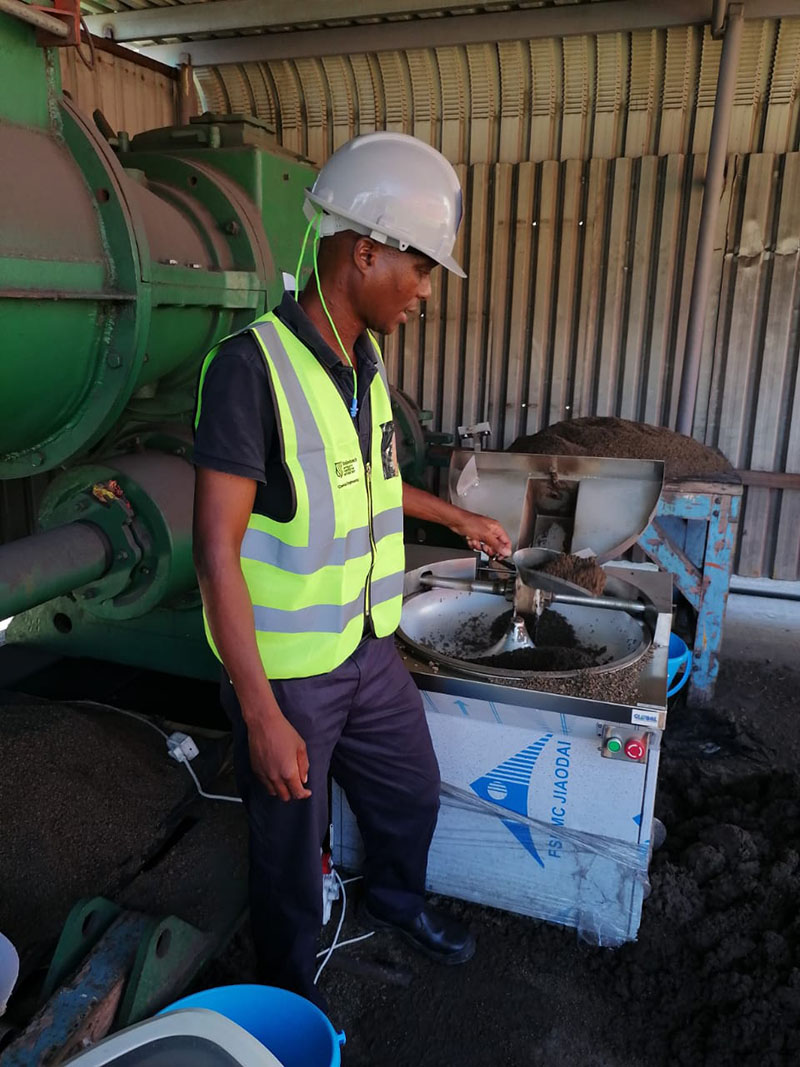
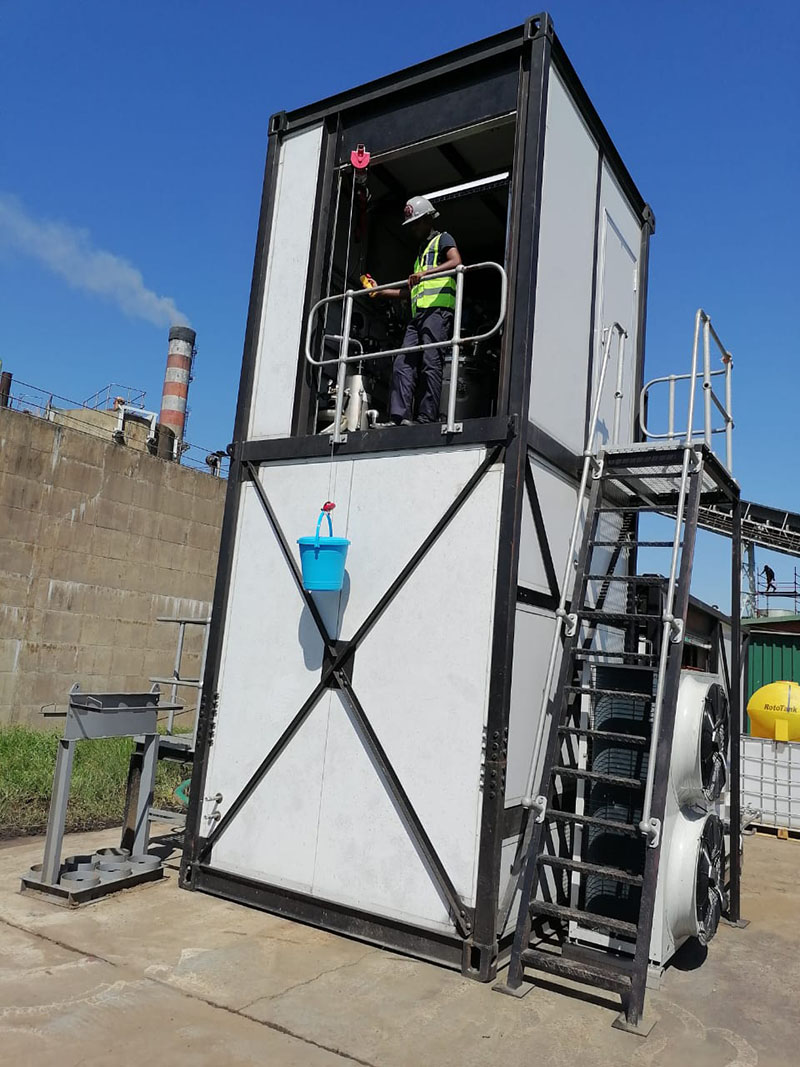
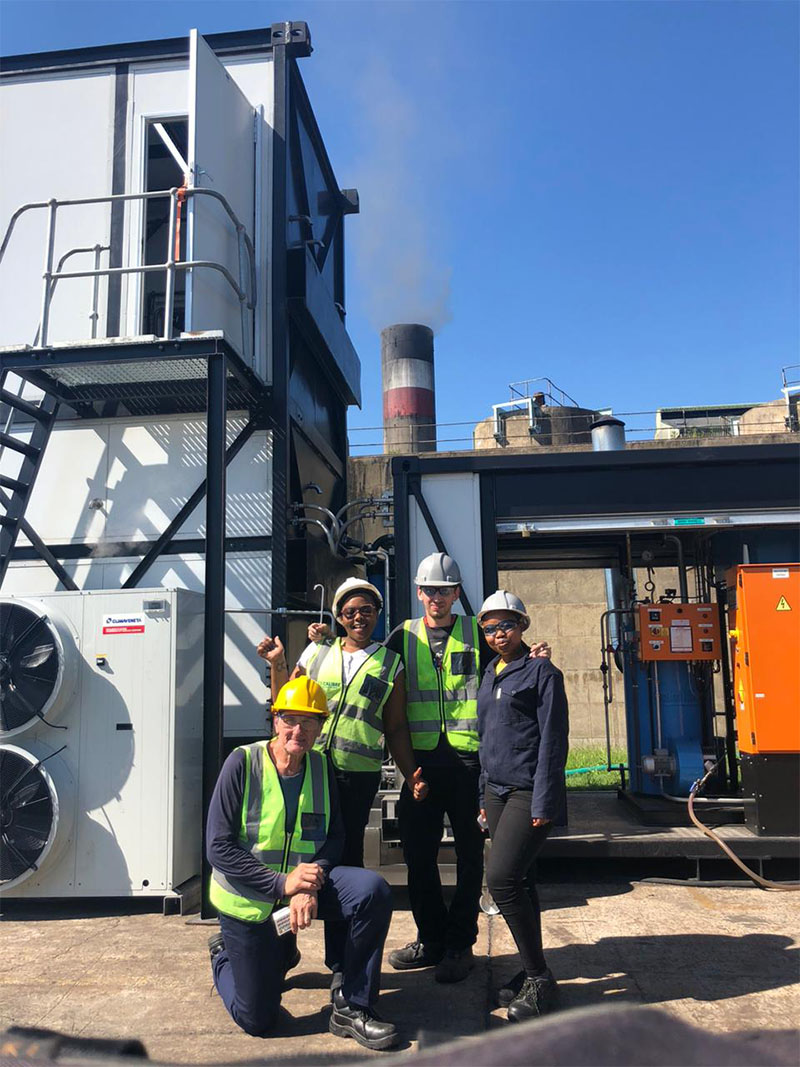
The data collected since the installation of the demonstration unit will inform the building of a full-scale plant.
The demo plant team
The demonstration unit was built and tested in Cape Town by HiCalibre Engineering under the watchful eye of the Stellenbosch team. It is housed in two shipping containers that were transported to KwaZulu-Natal in August 2023. Zinhle Ngubane, Francois de Flamingh, and a team of operators now oversee its running.
“The data being collected will inform the building of a full-scale plant. Ngubane is also training four operators to run the demo plant,” says Görgens.
Ngubane is hoping to complete a master’s study based on her hands-on experience with the project and the data being collected.
The unit is “testament to the level of skills available at SU, and within South Africa,” she says.
“Normally, the type of reactor housed in the unit would have been sourced from international specialist companies. However, all aspects of the unit — from design through to construction — were led by the SU team, working with the local company HiCalibre Engineering.”
Prof Dale Guyre, also from the Department of Chemical Engineering, has been closely involved in the design, construction, and commissioning of the demonstration plant, while Van Rensburg oversees collaboration with industrial partners and funders of the project. The addition of Dr Daneal Rorke, a postdoctoral researcher with experience in paper sludge fermentation, has furthermore strengthened the team.
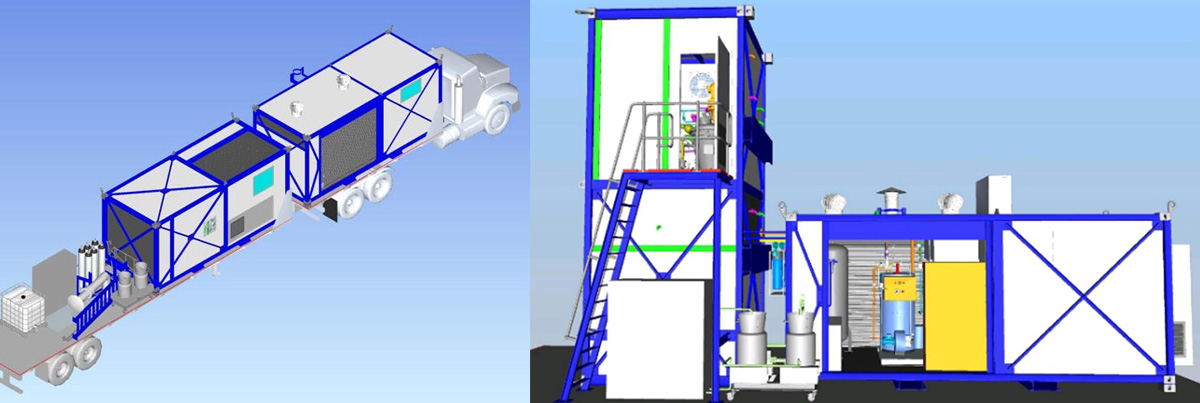
The demonstration unit was designed to fit into two converted shipping containers. After being built in Cape Town, it was transported to KwaZulu-Natal.

The research initiatives reported on above are geared towards addressing the United Nations’ Sustainable Development Goals numbers 3, 7 and 12, and 15 goals number 1, 4, 5 and 7 of the African Union’s Agenda 2063.
Useful links
SU’s Department of Chemical Engineering
Senior Chair of Energy Research (CoER): Biofuels and Other Alternative Clean Fuels
The added dimensions of biofuels research
Research reveals environmental and commercial benefits to tackling bioplastics disposal dilemma
X: @MatiesResearch and @StellenboschUni